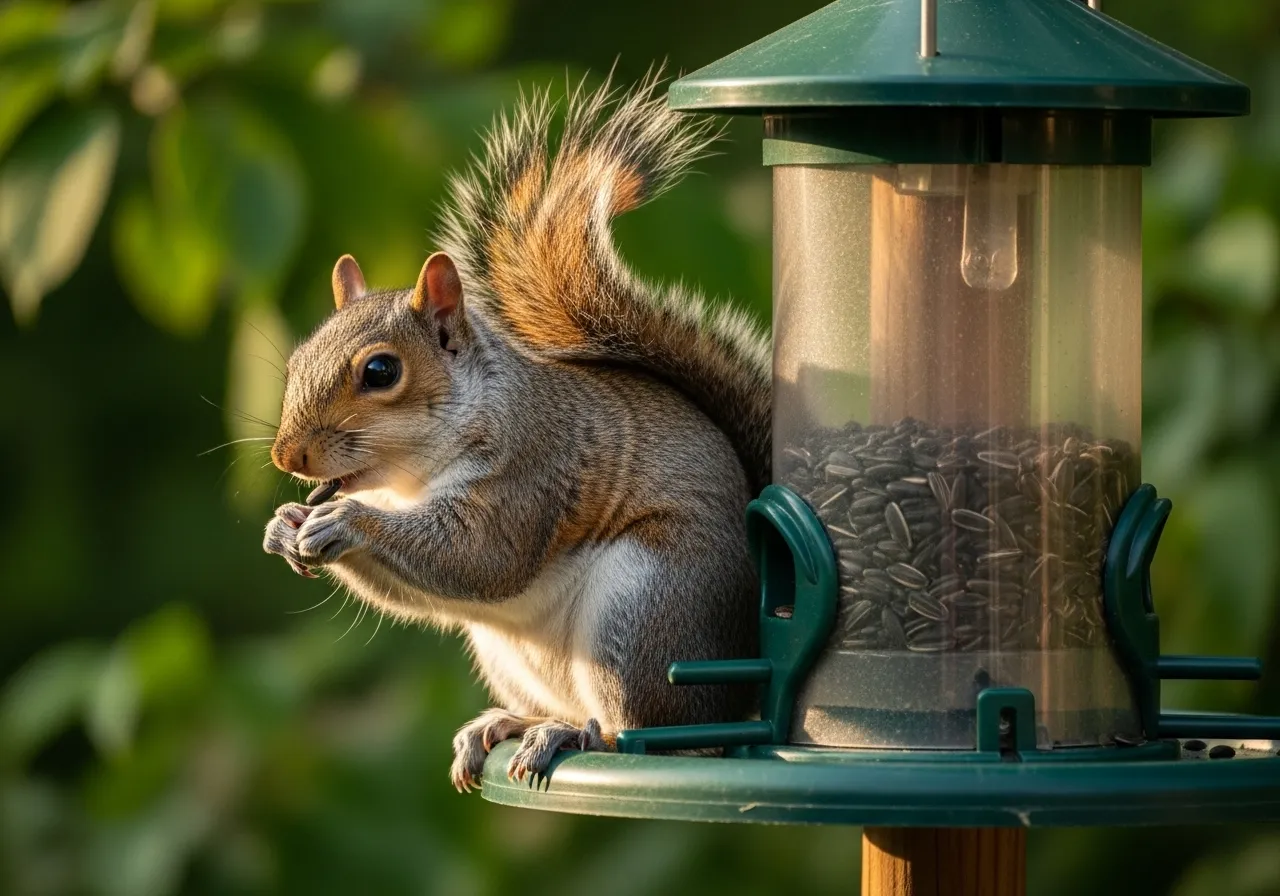
Creating a Bird-Friendly and Pet-Safe Backyard
The secret to successful backyard birdwatching is simple: provide the essentials of food, water, and shelter. When you offer these resources reliably, birds will learn that your yard is a safe and welcoming stop on their daily travels. However, as pet owners, we have an added responsibility to ensure this new setup is safe for everyone involved—visiting birds and resident pets alike. Let’s break down how to create an inviting habitat.
Food: The Best Way to Attract Birds to Your Yard
A well-stocked feeder is the fastest way to roll out the welcome mat for feathered friends. But not all feeders and seeds are created equal.
Choosing a Feeder:
Tube Feeders: These are cylinders with small perches and feeding ports, ideal for smaller birds like finches, chickadees, and sparrows. They protect seed from weather and can be challenging for larger, more aggressive birds like jays to dominate.
Hopper Feeders: Often shaped like a small house, these hold a good amount of seed and dispense it into a tray below as birds eat. They attract a wide variety of birds, from cardinals to grosbeaks.
Platform Feeders: A simple open tray, these feeders are accessible to the widest range of birds, including ground-feeders like doves and juncos. The downside is that the seed is exposed to rain and can be easily monopolized by squirrels or larger birds.
Suet Feeders: These are typically small wire cages designed to hold cakes of suet, a high-energy food made from rendered fat. Woodpeckers, nuthatches, and chickadees absolutely love suet, especially in colder months.
Choosing Seed:
If you’re starting with just one type of seed, make it black-oil sunflower seeds. Their thin shells and high oil content appeal to the greatest variety of birds. Safflower seeds are another great choice; they are a favorite of cardinals but are often ignored by squirrels and grackles. For attracting tiny goldfinches, consider a separate tube feeder filled with Nyjer (thistle) seed. A good quality mixed seed can also work, but avoid cheap mixes heavy on red milo, as most birds will just kick it to the ground.
Pet Safety First: Feeder Placement and Cleanliness
Your number one priority is keeping pets and bird food separate. Place feeders high enough that your dog can’t reach them or on a pole system with a baffle to deter both squirrels and curious climbers. This is important because while most bird seeds aren’t toxic, consuming large quantities can cause gastrointestinal upset in dogs and cats. More seriously, seed that gets wet can grow mold, which can produce aflatoxins that are very harmful if ingested by pets.
Clean your feeders every two weeks with a solution of one part bleach to nine parts water. Rinse them thoroughly and let them dry completely before refilling. This prevents the spread of disease among birds and ensures no harmful bacteria builds up—a good practice for any pet owner who knows their dog might sneak a fallen seed or two.
Water: An Essential for Drinking and Bathing
Water can be even more effective at attracting birds than food, especially during hot, dry spells or freezing winters. A simple bird bath is all you need.
Choose a shallow basin—birds prefer water that is no more than one to two inches deep. You can add a few stones or large pebbles to one side to give smaller birds a safe place to perch. Place the bird bath in a relatively open area, so birds can see potential predators approaching, but with a nearby shrub or tree for a quick escape.
Pet Safety Note: Ensure your bird bath is heavy and stable, so a curious dog can’t knock it over. If your dog is tempted to drink from it, and many are, it’s crucial to change the water daily and scrub it clean every few days. Never use any chemicals or algaecides to keep the water clean. Fresh, clean water is safest for the birds and for any pet who might take a sip.
Shelter and Nesting: Creating Safe Havens
Birds need safe places to rest, hide from predators, and raise their young. The best way to provide this is by planting native trees, shrubs, and flowers. Dense shrubs offer excellent cover, while trees provide perching spots and potential nesting sites. Native plants also offer natural food sources like berries, seeds, and insects.
You can also add a birdhouse, also called a nesting box. When choosing one, make sure it’s designed for a specific species. The size of the entrance hole is critical—a small hole keeps larger birds and predators out. Look for a box made of natural, unpainted wood with drainage holes in the bottom and ventilation slots near the top. Place it in a quiet part of your yard, away from feeders and heavy foot traffic.
Pet Safety Note: This is where we must be most mindful. A nesting bird family is incredibly vulnerable. If you have a birdhouse, this area of the yard should be off-limits for your dog during nesting season (typically spring and summer). Use a temporary, lightweight fence or keep your dog on a leash when in that part of the yard. For cat owners, this responsibility is even greater, which we will discuss in detail next.














